235 SACD / Wolfgang Amadeus Mozart: String Quartets KV 465 & KV 458
Description
Herewith the Auryn Quartet says goodbye to the record market. The stereo version achieved wonderful reviews in Spiegel, Audio, Klassik-heute, CD hot list and many others. The multi-channel of this SACD adds another dimension.
„Ein Klang aus Seide und Gold“, so Heinz Gelking in Image Hifi.
Time goes by. Today younger, also very good ensembles dominate the concert halls who bring along a totally different view of the music. Which is a good thing. But there is no quartet that embodies an as long and homogeneous tradition back to Amadeus and Guarneri Quartet. With Auryn Quartet an unrivalled history comes to its end. Chapeau!
(Concerts will go on until August 2021.)
4 reviews for 235 SACD / Wolfgang Amadeus Mozart: String Quartets KV 465 & KV 458
You must be logged in to post a review.

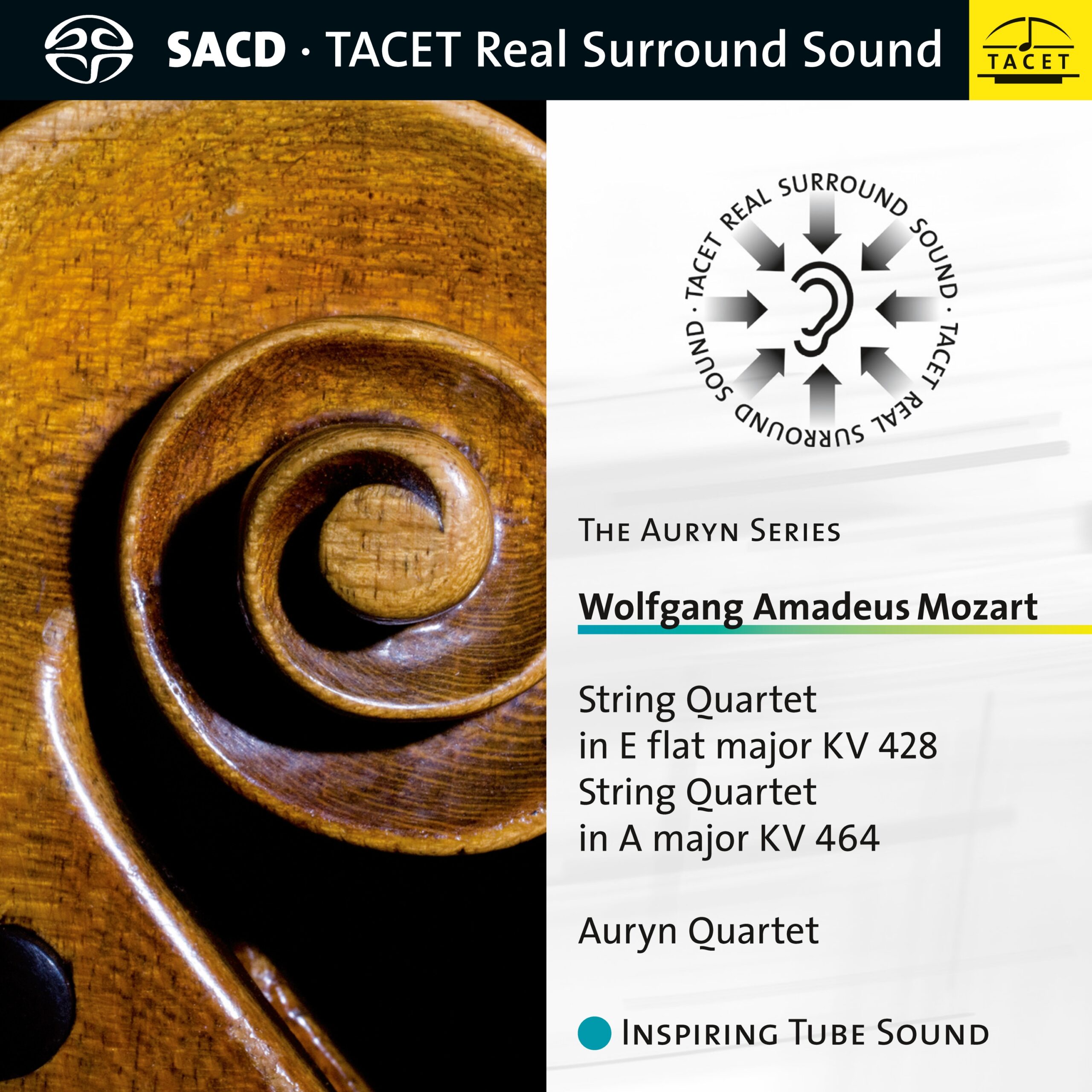
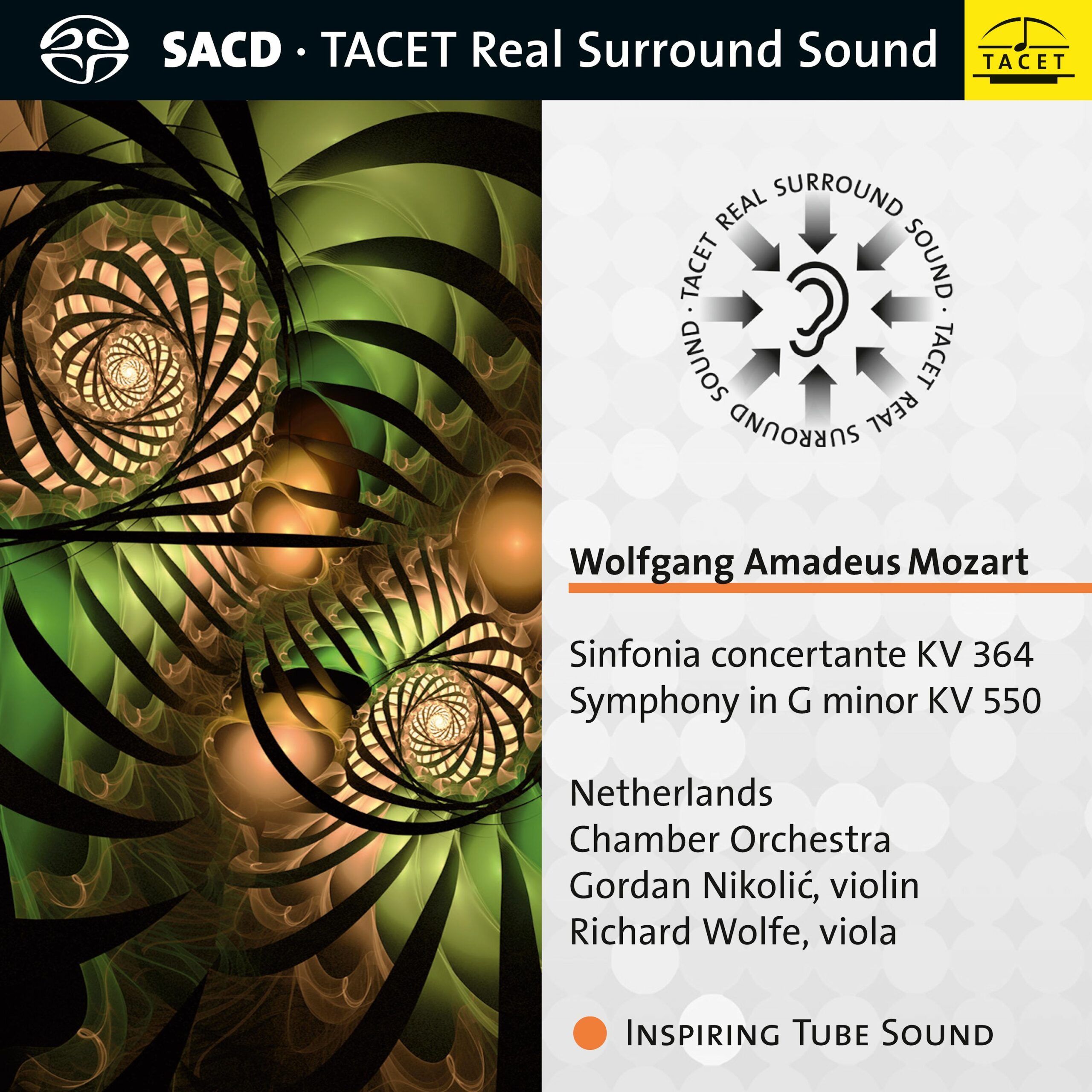
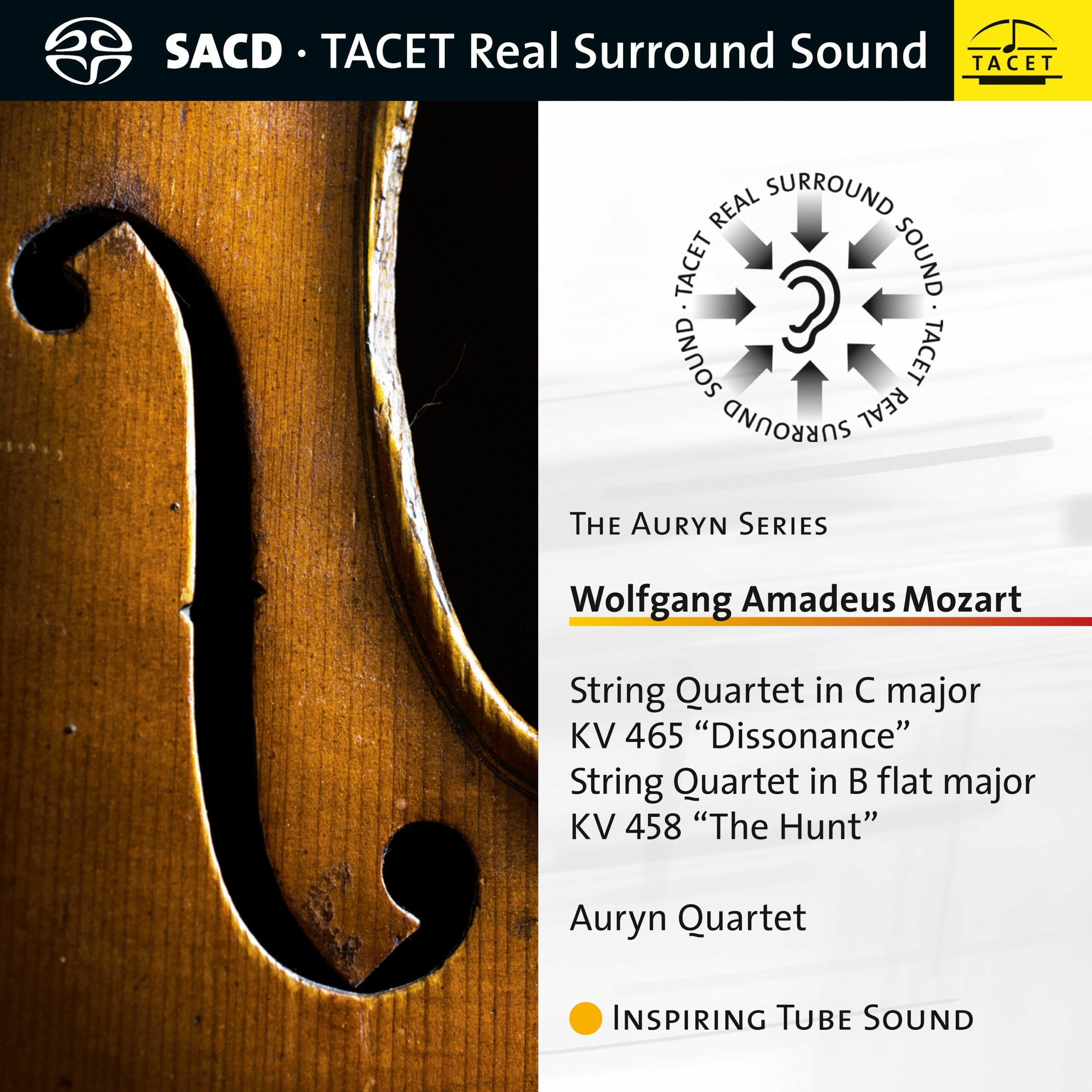
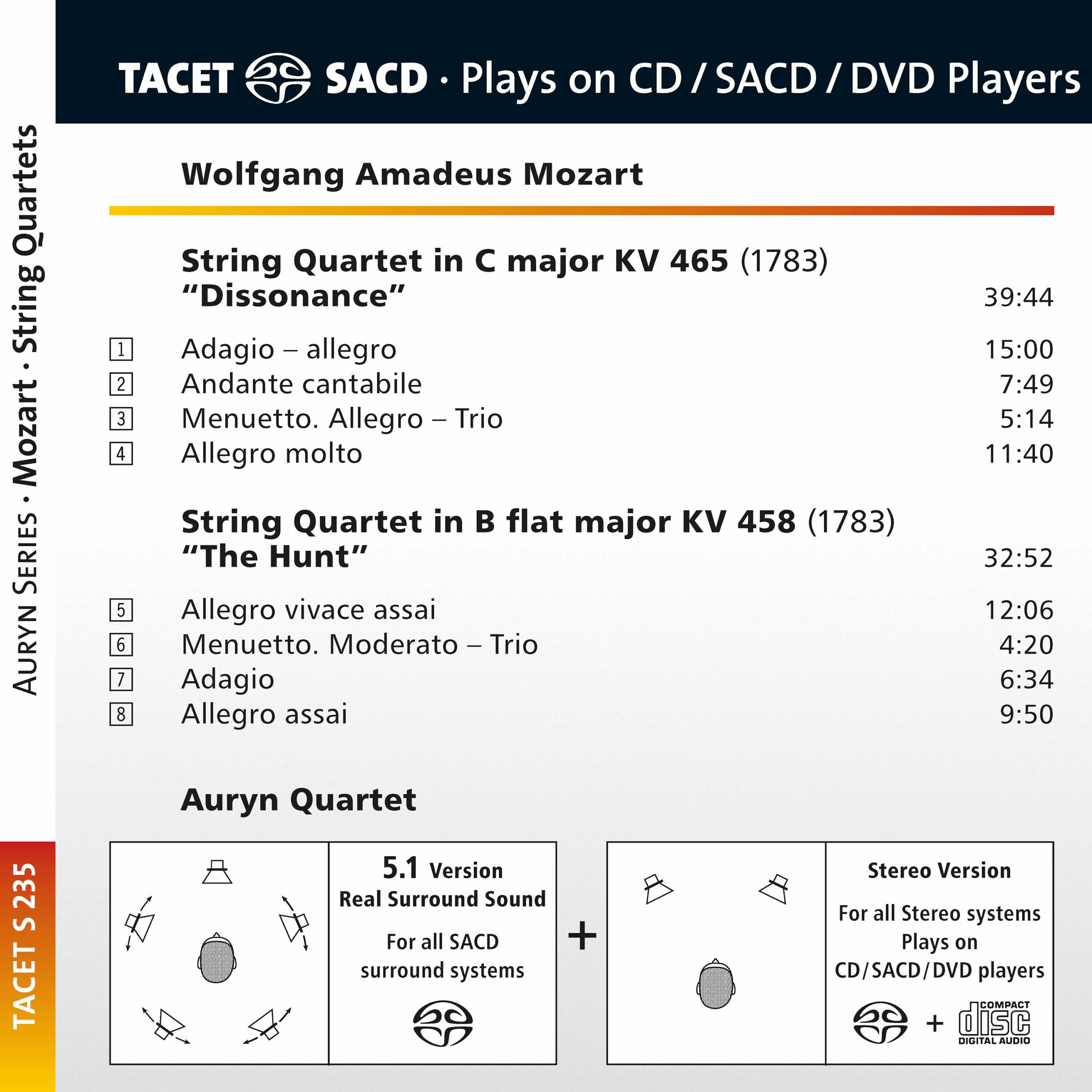
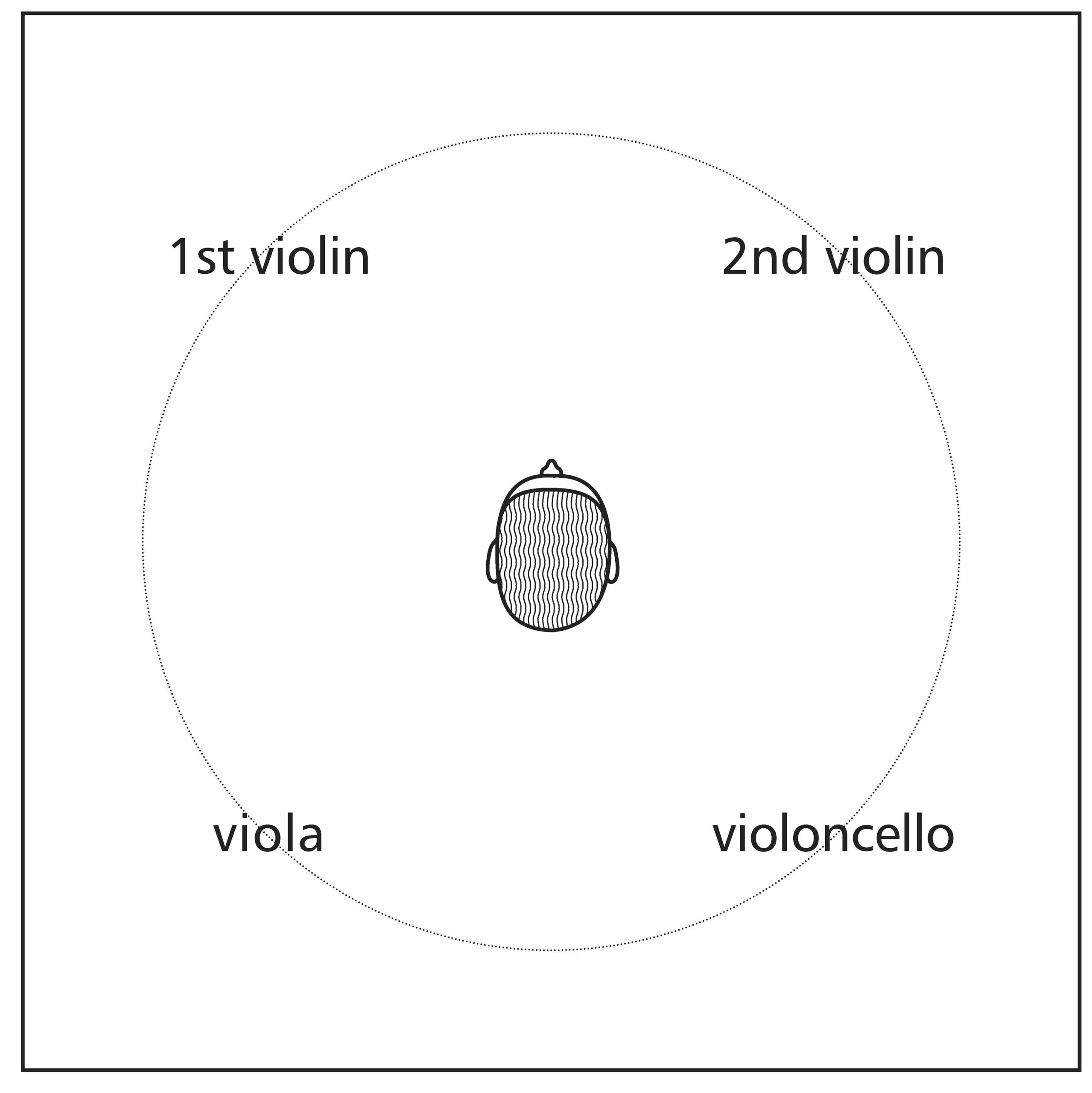



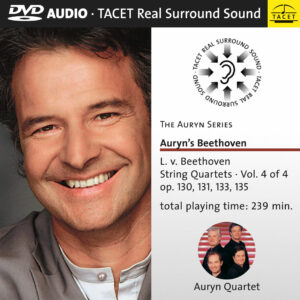

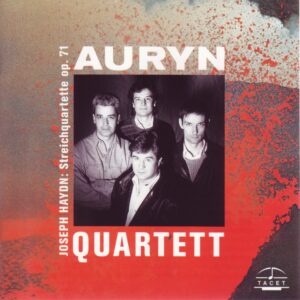
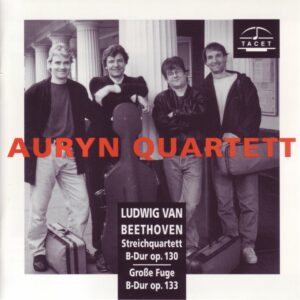
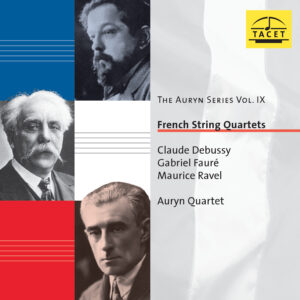
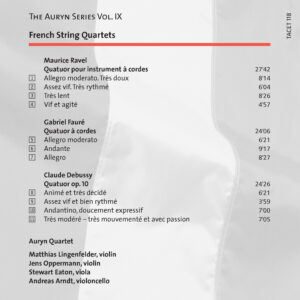
klassik.com –
--> original review
(…) a brilliant circular stroke of successful interaction and masterful, dynamic disposition (…)
Classique HD –
[Automatische Übersetzung – Originalkritik siehe unten]
Lw Auryn Quartet makes its latest recording by performing String Quartet in C major KV 465 “Dissonance” and the String Quartet in B flat major KV 458 “The Hunt”, these two quartets are part of the series of six dedicated to Haydn . Mozart composed his deepest, most intimate and most intense works there.
the Auryn Quartet offers a convincing interpretation with flawless cohesion and beautiful technique. The surround experience is surprising.
Album of the Month July 2020, Classic HD
______________________________________________________________
Lw Quatuor Auryn signe là son dernier enregistrement en interprétant Quatuor à cordes en ut majeur KV 465 „Dissonance“ et le Quatuor à cordes en si bémol majeur KV 458 „La chasse“, ces deux quatuors font partie de la dérie de six dédiés à Haydn. Mozart a composé là ses oevres les plus profondes, les plus intimes et les plus intenses de ses compositions.
le Quatuor Auryn offre une interprétation convaincante avec une cohésion sans faille et une belle technique. L’expérience surround est surprenante.
Album du Mois Julliet 2020, Classic HD
Audio 5/2020 –
A classical string quartet that lasts as long as a romantic symphony? Mozart's best-known string quartet, nicknamed “Dissonance,” went beyond the dimensions of the work of the time. The renowned Auryn Quartet, founded in 1981, presents the multitude of musical ideas in an inspiring, balanced and dynamically differentiated interpretation. The tempos, often with a dance-like swing, also fit the work like a tailor-made suit. All of this also applies to the recording of the “Jagd” quartet. The great production is completed by the extremely natural and spatial sound. Mozart at its finest.
Andreas Fritz
Pizzicato –
--> original review
Mozart with the Auryn Quartet: Timeless of the highest quality
You may want to read the headline in two directions. It may refer to the works and/or the interpretation by the Auryn Quartet. It is undisputed that the works, which Mozart, as he himself wrote, are 'the fruit of long, painstaking work', are of the highest quality. As his own view of the quartet literature, which was founded in the classical literature by Haydn's six works op. 33, Mozart also created half a dozen quartets, which, however, are given individual quartet numbers and were also written intermittently over longer periods of time .
The Auryn Quartet, still the founding line-up for almost four decades, is characterized by its own performance style, which combines the homogeneous sound of the Amadeus Quartet with the transparent and more individual sound of the Guarneri Quartet. This approach creates a sound that is both clearly technically sophisticated and warm and lively, so that nothing is left to be desired, but nothing arbitrary is audible either. For the Mozart Quartets, a succinct but not irritating audio image is created that subtly illuminates the qualities of the compositions and takes the listener on a journey that is so familiar and yet always leads to the highest levels of enjoyment. It seems almost rebellious how the slow introduction of the C major quartet, which starts in the searching C minor, provides such a mysterious and surprising introduction to the recording. But then comes exquisite quality that doesn't experiment, but is always exciting.
Uwe Krusch